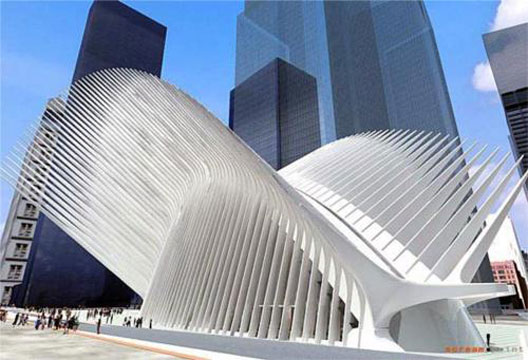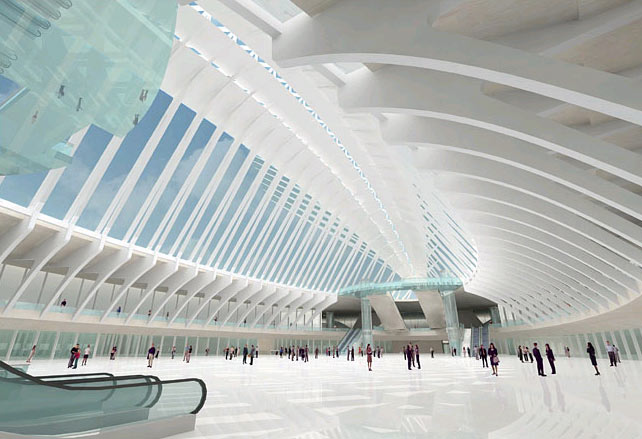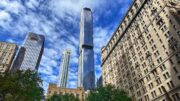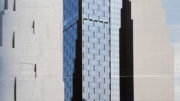 |
| Image from Urban Omnibus |
While many New Yorkers bemoan the ugliness of Penn Station, a dramatic new transportation gateway is now under construction in Lower Manhattan.
The most visible progress since the 9/11 attacks has been the reconstruction of the new World Trade Center, but another notable aspect that seems to have been forgotten is the massive transit center now being built. Designed by Santiago Calatrava, the World Trade Center Transit Hub is going to be a monument to modern design and engineering, as well as cost-overruns given the project’s now $3.8 billion pricetag (although figures vary, it’s always wiser to use the higher estimates).
Originally slated to cost $2.2 billion, the project’s cost-overruns certainly aren’t unwarranted given the complexity of the project. While downtown subway lines are currently connected in a jumbled warren of underground passageways, the Calatrava hub promises to link everything in a stately and world-class terminal fitting for Lower Manhattan. In total, eleven separate subway lines (the 2, 3, 4, 5, A, C, E, J, N, R, and Z trains) will be linked together, along with the PATH train to New Jersey. The new Fulton Street Transit Center will also be connected to the Calatrava Hub by an underground link.
All in all, the new Center will encompass 1.3 million square feet of development. 800,000 square feet will be used for transit purposes, while the Center will also feature 500,000 square feet of retail space. The Port Authority’s website further states that 250,000 people are expected to use the Center each day, a staggering number. Calatrava’s Hub will be the third largest transit center in New York in terms of square footage, although aesthetically it will only compare to Grand Central as a gateway to Manhattan.
While the chief purpose of the Hub may be functional, the new gateway is nonetheless extremely aesthetically pleasing, perhaps partially explaining the $3.4 billion pricetag. Soaring white fingers complete the ‘oculus’ of the Hub, with the overall structure reaching 150 feet in height. The main hall will be extremely grand, with the oculus and retail component combining to create a truly phenomenal pedestrian experience.
Calatrava’s terminal manages to combine grandeur with effortless simplicity, and the result is sure to be stunning. Work is well underway, and completion is scheduled for 2015. More information can be found at the World Trade Center website.
| The oculus taking shape: image from lofter1 at Wirednewyork via the Earthcam |
Subscribe to YIMBY’s daily e-mail
Follow YIMBYgram for real-time photo updates
Like YIMBY on Facebook
Follow YIMBY’s Twitter for the latest in YIMBYnews





